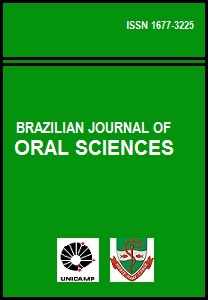Abstract
Evidence-based dentistry will play an important role in dentistry’s future efforts to control the ravages of diseases affecting the orofacial complex. The historical record suggests that human dental care derived from early attempts to retain or replace teeth lost to accidents or disease, and this paradigm has served us well for hundreds, if not thousands, of years. More recently, research has enabled man to fight dental disease in ways not previously thought possible. Fluoridation and the increasing significance of genetic intervention, for example, have opened entirely new avenues of dental care, which suggest revolutionary changes in future dental care. For a restorative-based healthcare profession like dentistry, the diagnosis and treatment of patients using these advances will require a significant change in mind-set. This paper will briefly discuss historical events leading to the present state of dentistry, suggest changes that restorative dentists will have to make to survive, and the role evidence-based dentistry must play in an evolving new dental care paradigm.References
Chiappelli F, Prolo P, Newman M, Cruz M, Sunga E, Concepcion E, Edgerton M. Evidence-based practice in dentistry: Benefit or Hindrance. J Dent Res. 2003; 82: 6-7.
Mount G, Hume R. Dental Caries. URL: http:// www.dent.ucla.edu/ce/caries.
Powers B, Powers C. How Sweet It Was: Cane Sugar from the Ancient World to the Elizabethian Period. URL: http:// www.maggierose.20megsfree.com/ sugar.html.
Ring ME. Dentistry: an illustrated history. New York: Harry N. Abrams; 1985. pp.160-6.
Buonocore MG, Matsui A, Yamaki M. Abrasion of restor ative materials. N Y State Dent J. 1966; 32: 395-400.
Institute of Medicine. Dental Education at the Crossroads. Field MJ, ed. Washington, DC: National Academy Press; 1995. pp.61-3.
Featherstone JDB, Roth JR. Cariology in the New World Order J Cal Dent Assoc. 2003; 31: 123-33.
US Department of Health and Human Services. Oral health in america: a report of the surgeon general. Rockville, MD: US Department of Health and Human Services, National Institute of Dental and Craniofacial Research, National Institutes of Health; 2000. Chapter 12.
Young CS, Terada S, Vacanti JP, Honda M, Bartlett JD, Yelick PC. Tissue engineering of complex tooth structures on biodegradable polymer scaffolds. J Dent Res. 2002; 81: 695-700.
Baum BJ, O’Connell BC. The impact of gene therapy on dentistry. J Am Dent Assoc. 1995; 126: 179-89.
Baum BJ, Kok M, Tran SD, Yamano S. The impact of gene therapy on dentistry: a revisiting after six years. J Am Dent Assoc. 2002; 133: 35-44.
Douglass GD. Making a comprehensive diagnosis in a comprehensive care curriculum. J Dent Educ. 2002; 66: 414-20.
Bawden JW, Crandell CE. Definition. In: Crandell CE, eds. Comprehensive care in dentistry. Postgraduate Dental Handbook Series. Littleton, MA: PSG Publishing; 1979. vol.3, pp.1-8.
Nowak AJ, Casamassimo PS. The dental home: A primary care oral health concept. J Am Dent Assoc. 2002; 133: 93-8.
The Brazilian Journal of Oral Sciences uses the Creative Commons license (CC), thus preserving the integrity of the articles in an open access environment.

